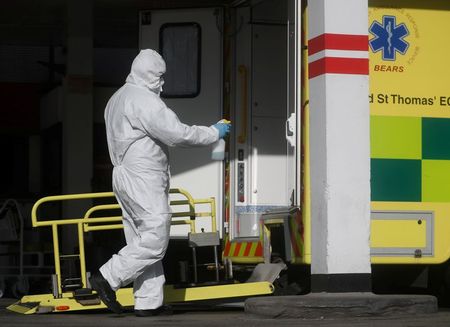By Kate Kelland
(Reuters) – As the new coronavirus spreads, words such as COVID-19, pandemic and social distancing have become part of daily vocabulary. But what exactly do they mean?
Here are some key terms explained:
CORONAVIRUS AND COVID-19
* There are several human coronaviruses – just as there are many other types of human viruses. The coronavirus that first emerged in people in December in China is a newly-identified human coronavirus and has been named SARS-CoV2. It is this specific coronavirus that is causing the current disease pandemic, and it should be referred to either as the new coronavirus or by its name SARS-CoV2.
* COVID-19 is the name of the respiratory disease caused by SARS-CoV2, the new coronavirus. It is not caused by any other type of virus and it is not caused by just any “coronavirus”.
SELF-ISOLATION AND SOCIAL DISTANCING
* Self-isolation applies to people who have symptoms of COVID-19 infection and to those who live with them. It involves staying at home and not going out, apart from into your own garden or yard if you have one. It also means staying away, as much as possible, from other people in the home, sleeping alone, using separate towels, and washing and cleaning regularly.
* Social distancing has been introduced by many governments around the world and is designed to help people avoid catching and spreading the disease caused by the new coronavirus. It essentially means avoiding face-to-face contacts as much as possible. You can leave your home for exercise, for essential shopping or for work, but you should stay at least 2 meters from others.
EPIDEMIC AND PANDEMIC
* Both these terms are descriptive. They describe an outbreak of disease but are not classifications or rankings, and the World Health Organization (WHO) does not declare outbreaks as having pandemic or epidemic status.
* Epidemic is often used to describe a large outbreak of disease over a wide geographic area and affects a high proportion of a population.
* Pandemic is used to described an epidemic or outbreak of disease that has spread to multiple countries on several continents and affects an exceptionally large number of people.
QUARANTINE AND LOCKDOWN
* Quarantine is a way of separating and restricting people who have been exposed to a disease, such as COVID-19, to see if they too have become infected and get ill. This is why groups of people returning to their home countries after being in Wuhan, China, for example, or after being on a cruise ship where cases of COVID-19 were detected, were quarantined for around two weeks.
* The terms lockdown or shutdown are being used by many to describe more general and widespread restrictions on movement, work and travel on all people in a city, region or country.
VACCINES AND ANTI-VIRALS
* A vaccine is something that would be given to a healthy person to prevent them from being infected with a disease such as the COVID-19 disease caused by the new coronavirus.
* An anti-viral is a type of medicine, or therapeutic, that would be given to try and treat a person who is infected with a viral disease – such as COVID-19. Anti-virals cannot treat diseases caused by bacteria, and antibiotics cannot treat diseases caused by viruses.
(Reporting and writing by Kate Kelland; Editing by Janet Lawrence)


